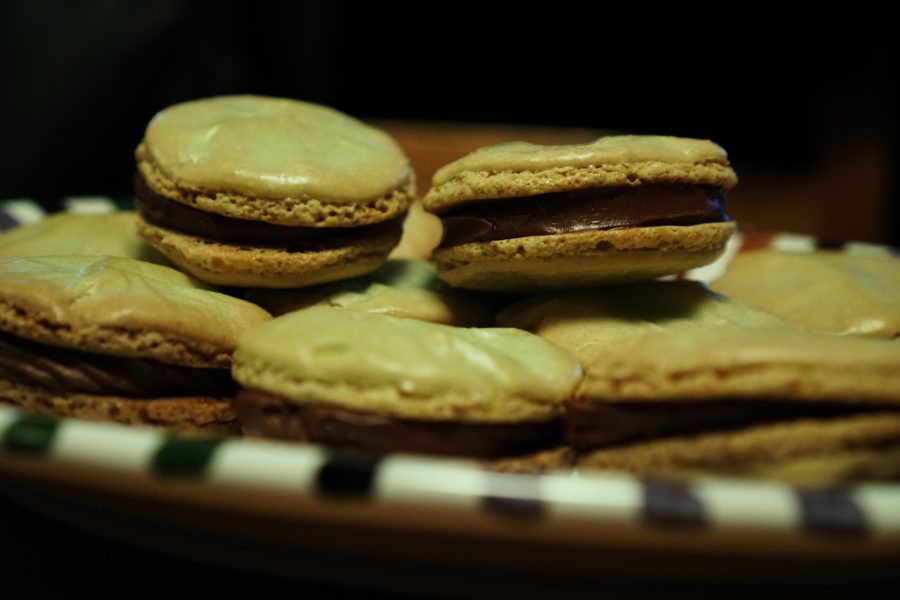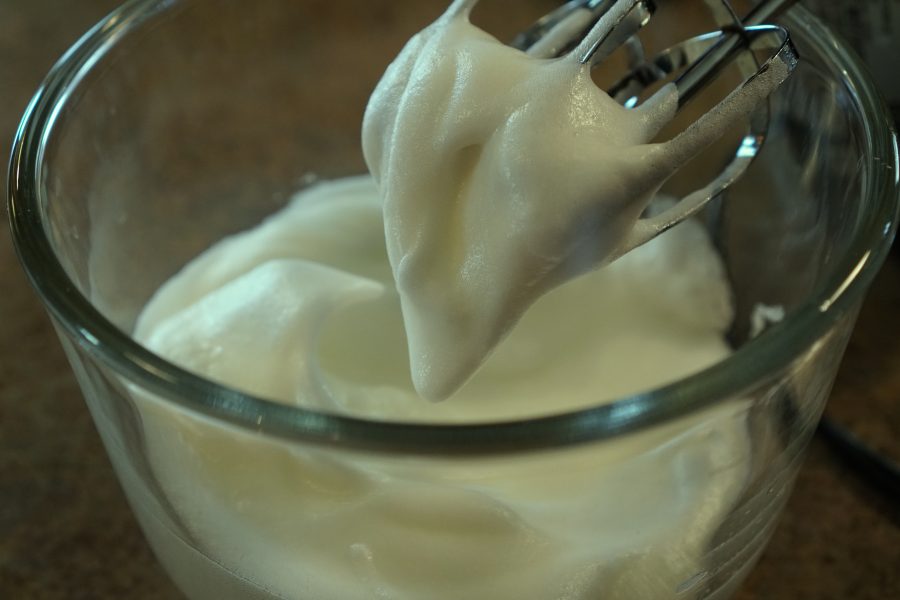What’s important to realize before making macarons is how technical they are. There are several steps that go into the texture, shape, and every part of the result depends on how well you follow the directions. The first time I made them, it was a soupy mess because I didn’t grind the almonds correctly. These little almond cookie treats, despite being popular and seen everywhere, have an intricate recipe that is deceptively difficult. Discussed in this article, however, is the incredible science that goes into the making of macarons that makes them so visually pleasing (not to mention tasty). It’s no molecular gastronomy, but it’s interesting enough to investigate.
Leveling and Aeration
There’s a certain way in which dry ingredients should be measured, and while it isn’t honored by every baker, it’s still important in certain recipes. When working with dry ingredients, you must level off the top of your cup with a straight edge (e.g. the back of a knife). This ensures that whatever dry ingredient one is using has been measured correctly, and you’re not going over or under the required amount you need. Dry ingredients also need to aerate, which means that they need to be mixed and left out so that air can pass through them after a certain amount of time. This lets the dry ingredients be less compact, as compact ingredients lead to incorrect measurements.
[Jones, Jenny. “How To Measure (& Aerate) Flour.” Jenny Can Cook, 17 Sept. 2016]
Setting and Feet
After piping macaron batter (I piped my batter to the diameter of a shot glass), they should sit out for at least an hour, or until they have set completely. They should be dry to the touch, and shouldn’t smear after wiping your finger across the top. A hard shell on the top makes it so that once it’s baking in the oven, the air escapes through the bottom of the cookie as opposed to it escaping through the top and cracking the shell. The appearance of the cookie after the air escapes gives it what are called ‘feet’, or air pockets that bubble out and curl around the base of the cookie. The feet are arguably the most distinct and recognizable part of a cookie’s appearance.
[Mimi. “Resting the Macaron Shell.” The Best Macaron Recipe, Macaron Art & More, 28 Aug]
High Oven Temperatures
Macarons are very sugary, so if the conditions aren’t just right, they may brown, crack, or end up hollow. The macarons brown because, when sugar is heated, the oxygen in the sugar is released. This causes the areas where air is released (the feet and edges) to brown. Macarons may go hollow due to them not being set long enough. When the shell is hard, the air has no choice but to escape through the feet. When the shell is soft, the air escapes through the top, the shell cracks, and the macaron goes hollow.
Egg Whites
Egg whites are a big part of the recipe. The two methods towards egg white preparation are French and Italian. The French method involves using granulated sugar in your egg whites, and the French method involves using simple syrup (a syrup made from sugar and water) in the whites. Simple syrup is made from boiling water and sugar until the sugar is completely dissolved. Then (in the recipe I used), you pour the syrup directly into the whites. For macarons, egg whites need to be stiff. They become stiff from continuous beating, as the activity from beaters causes the whites to become frothy and eventually reach a semi-solid state. ‘Stiff peaks’ refer to the shape of the whites after taking the beaters out. If the whites are stiff, they form triangles that stand on their own. Some bakers prefer their macarons to be so stiff that, when you turn the bowl upside down, nothing falls out. However, the batter will end up being somewhat liquid while still firm enough to hold shape after being piped. Stirring the batter continuously after folding the ingredients together determines the thinness.
To conclude, there are several variables going into baking any recipe. Theoretically, any recipe could end up horribly. However, the variables towards the success of macarons is so much more technical. You have to take into account how long the egg whites need to be beaten, what to put in egg whites to improve stiffness, the boiling point of simple syrup, any clumping of the dry ingredients, thickness of the batter, diameter of the cookies themselves, which ganache would taste best with which flavor, and so many other factors. Macarons should be considered an experiment as much as they’re considered a recipe. This was my third trial ever making macarons, and they still had faults. As with any experiment, it’s always important afterwards to examine your variables and analyze what you did wrong. Most importantly, you figure out how you can do improve the next time.









